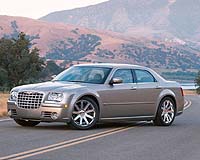 |
Paris (AFP) June 8, 2009 You worry a lot about the environment and do everything you can to reduce your carbon footprint -- the emissions of greenhouse gases that drive dangerous climate change. So you always prefer to take the train or the bus rather than a plane, and avoid using a car whenever you can, faithful to the belief that this inflicts less harm to the planet. Well, there could be a nasty surprise in store for you, for taking public transport may not be as green as you automatically think, says a new US study. Its authors point out an array of factors that are often unknown to the public. These are hidden or displaced emissions that ramp up the simple "tailpipe" tally, which is based on how much carbon is spewed out by the fossil fuels used to make a trip. Environmental engineers Mikhail Chester and Arpad Horvath at the University of California at Davis say that when these costs are included, a more complex and challenging picture emerges. In some circumstances, for instance, it could be more eco-friendly to drive into a city -- even in an SUV, the bete noire of green groups -- rather than take a suburban train. It depends on seat occupancy and the underlying carbon cost of the mode of transport. "We are encouraging people to look at not the average ranking of modes, because there is a different basket of configurations that determine the outcome," Chester told AFP in a phone interview. "There's no overall solution that's the same all the time." The pair give an example of how the use of oil, gas or coal to generate electricity to power trains can skew the picture. Boston has a metro system with high energy efficiency. The trouble is, 82 percent of the energy to drive it comes from dirty fossil fuels. By comparison, San Francisco's local railway is less energy-efficient than Boston's. But it turns out to be rather greener, as only 49 percent of the electricity is derived from fossils. The paper points out that the "tailpipe" quotient does not include emissions that come from building transport infrastructure -- railways, airport terminals, roads and so on -- nor the emissions that come from maintaining this infrastructure over its operational lifetime. These often-unacknowledged factors add substantially to the global-warming burden. In fact, they add 63 percent to the "tailpipe" emissions of a car, 31 percent to those of a plane, and 55 percent to those of a train. And another big variable that may be overlooked in green thinking is seat occupancy. A saloon (sedan) car or even an 4x4 that is fully occupied may be responsible for less greenhouse gas per kilometer travelled per person than a suburban train that is a quarter full, the researchers calculate. "Government policy has historically relied on energy and emission analysis of automobiles, buses, trains and aircraft at their tailpipe, ignoring vehicle production and maintenance, infrastructure provision and fuel production requirements to support these modes," they say. So getting a complete view of the ultimate environmental cost of the type of transport, over its entire lifespan, should help decision-makers to make smarter investments. For travelling distances up to, say, 1,000 kilometres (600 miles), "we can ask questions as to whether it's better to invest in a long-distance railway, improving the air corridor or boosting car occupancy," said Chester. The paper appears in Environmental Research Letters, a publication of Britain's Institute of Physics. The calculations are based on US technology and lifestyles. It used 2005 models of the Toyota Camry saloon, Chevrolet Trailblazer SUV and Ford F-150 to calibrate automobile performance; the light transit systems in the San Francisco Bay Area and Boston as the models for the metro and commuter lines; and the Embraer 145, Boeing 737 and Boeing 747 as the benchmarks for short-, medium- and long-haul aircraft. Share This Article With Planet Earth
Related Links Car Technology at SpaceMart.com
 Appeals court clears Chrysler exit from bankruptcy
Appeals court clears Chrysler exit from bankruptcyNew York (AFP) June 5, 2009 A US appeals court Friday cleared the way for Chrysler to exit bankruptcy under an alliance with Italy's Fiat, dismissing a challenge from Indiana's state pension funds. A three-judge panel from Second Circuit Court of Appeals upheld without comment a decision by a bankruptcy judge approving the US government-backed plan to create a new entity to buy the assets of the troubled number three ... read more |
|
| The content herein, unless otherwise known to be public domain, are Copyright 1995-2009 - SpaceDaily. AFP and UPI Wire Stories are copyright Agence France-Presse and United Press International. ESA Portal Reports are copyright European Space Agency. All NASA sourced material is public domain. Additional copyrights may apply in whole or part to other bona fide parties. Advertising does not imply endorsement,agreement or approval of any opinions, statements or information provided by SpaceDaily on any Web page published or hosted by SpaceDaily. Privacy Statement |